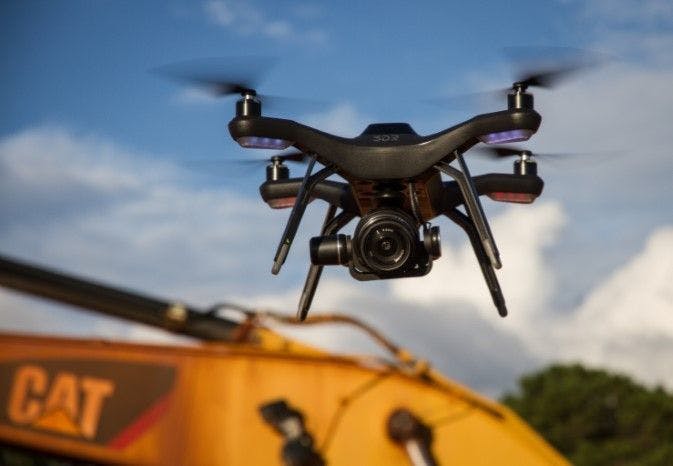
Using UAVs to Capture Site Data in the Field: Capturing Existing Site Condition Data Will Be Faster, Cheaper and Easier in 2017
Technology improvements in the field are lagging behind the pace of technology adoption in the design and planning phase of construction.
While CAD and BIM software technology make it easy to detect inconsistencies and clashes in the digital model during the design phase, it can be challenging to do so once construction begins. One way to capture the necessary data in the field is with the use of unmanned aerial vehicles (UAVs).
Integrated Data will Minimize Risk Along the Critical Path
In the past, the concept of data capture in construction was considered costly and time-consuming and required a specialist. UAVs are changing that perception by turning data capture into a commodity. Capturing existing conditions onsite will cost pennies and take only minutes. The flight can be performed by licensed personnel. However, the last thing anyone on a construction site is looking for is a deluge of blind data. This data needs to be actionable and integrated into the existing workflows and systems being utilized. In 2017, data collected by UAVs will deliver extra value without extra work and provide a shareable common operation picture with context for all parties involved in the construction process. For example, aerial data will be integrated into the BIM process by general contractors and help minimize risk across the critical path of a construction project.
Closer Collaboration Between the Field and Office
With the cloud and BIM, construction is entering the era of communication. Information is at the center of a project, informing every person, every process and every decision. The gap between the physical and the digital has already been bridged from design all the way to construction and operations. However, the reverse information flow, from the real world into the digital world, is still limited. The ability of UAVs to quickly and easily capture existing site conditions and share them into current workflows is the missing link in this information loop. With data captured by UAVs, the field team can send information back to the office. This not only makes sure everyone stays on the same page and has access to the same information, but also brings the teams closer together. What does that mean for the boots on the ground? Field workers can quickly check for clashes and errors by overlaying the orthomosaics of the current construction progress with the design files coming from the office. This allows teams to immediately flag the problem and propose a solution with all parties involved, avoiding costly rework and redesign.
Automation Increases Onsite Safety
In addition to helping save money and time, UAVs increase safety on construction sites by keeping workers out of operations. Flying UAVs today is easy, safe and legal. With the advances in automation, planning a flight is simple. The UAV flies itself and collects all the required data. With the new UAV regulations launched in 2016, any employee may fly the UAV commercially after passing the remote pilot knowledge test. Finally, collecting aerial data in the field does not require a pilot anymore. Collecting data with UAVs not only keeps employees out of harm’s way, but also increases site uptime as flights can be performed during operating hours.
Ignoring digitalization is not an option for construction. It represents more than just what is happening on building sites across the world. On a micro-level, it’s about using connected systems to derive value and efficiency out of every small situation. On a macro-level, it’s about staying ahead of the curve (and the competition) by adopting methods that minimize risk at a project level and increase collaboration across the board. The time to hop aboard is now. In 2017, it is likely that UAVs will be on every construction site.
Related stories








